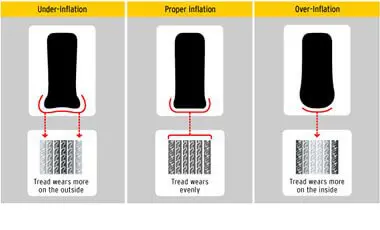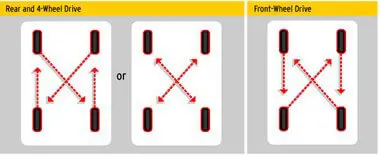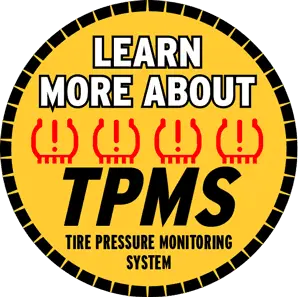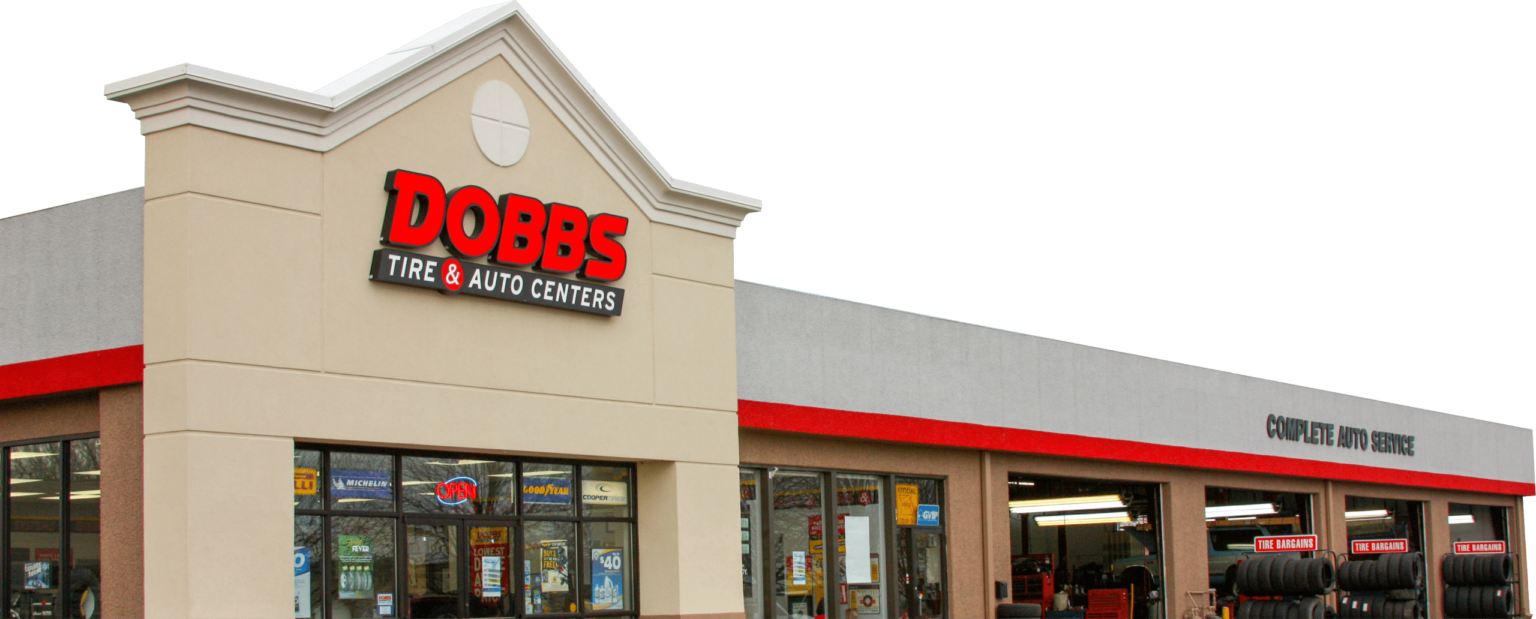Tire Guide
We're Here to Help
At Dobbs, we’re tire experts, and can provide answers to all of your tire related questions. If you don’t find your question answered in any of the following FAQs, fill out our Contact Us form, and we’ll promptly get back to you.
What Type of Tire Do You Need?
Tires come in a variety of types which makes choosing the right tire crucial for your driving safety and comfort. The tire experts at Dobbs can identify the best tires for your vehicle, and install them with exceptional precision.
Passenger Tires
There are two major categories of passenger tires: Standard and Touring. Standard tires are ideal for most 4-door sedans, midsize or compact vehicles. They feature larger sidewalls and a narrow footprint. Touring tires are often found on more premium vehicles equipped with a manufacturer’s touring suspension package. Generally, touring tires have a shorter sidewall and a larger footprint, which provides more responsive handling.
Performance Tires
Performance tires are a higher level of passenger tires. Depending on their performance/speed rating, tires in this group are usually placed in two categories: High Performance or Ultra High Performance. In both cases the speed rating ensures the tire is matched to the performance standards of the vehicle. Performance tires offer a variety of advantages which is why more new vehicles are now equipped with performance tires.
Light Truck Tires
The Light Truck group is made up of the Sport Utility Vehicles and Commercial Light Truck categories (a distinction primarily related to the specific vehicle and its use). Most SUV tires provide a smoother, quieter ride while giving reasonable load-carrying capacity. Tires for commercial use or work are capable of carrying a heavy load with a rating of C, D or E. These ratings indicate both the strength and load-carrying capacity of that tire, with C being the lowest and E being the highest.
How to Make Your Tires Last
By following these suggestions and tips, you can help optimize tire performance, achieve longer life, and maximize the return on your tire investment.
Inflation
Maintaining air pressure is the most important part of tire care. Proper inflation can extend tire life and increase fuel economy.
Tires should be inflated to the pressure recommended by the vehicle’s manufacturer. You can find this info in the owner’s manual or on the edge of the driver’s door.
Check pressure with a quality gauge every two weeks and before any long trips. Always check the pressure when the tires are cool (when the vehicle has been driven less than one mile).

Never bleed or reduce tire pressure when tires are hot. A tire’s air pressure will automatically increase as its internal temperature increases.
Vary inflation with load. Tire pressure can be increased when your vehicle is carrying extra weight. However, it should never exceed the maximum PSI as indicated on the tire sidewall.
Keep your tire valves capped. This keeps air in while keeping moisture and dirt out.
Rotation
Proper tire rotation ensures uniform wear and longer life for all tires on a vehicle. Refer to your owner’s manual for the manufacturer’s rotation recommendation. If no rotation period is listed, tires should be rotated every 6,000 to 8,000 miles.

Tire Wear
Paying close attention to your tires can reveal issues before they become a serious problem. Look for these early warning signs:
- A saw-tooth appearance on the edges
- Faster wear on the outer edges than in the middle
- The tire wears excessively on one side
- Cups or dips in the tread
A Simple Tread Test
Place a penny into a tread groove with Lincoln’s head upside down, facing you. If you can see the top of Lincoln’s head, you need a new tire.
Tire Pressure Monitoring Systems (TPMS)
To reduce the number of accidents related to low tire pressure, vehicle manufacturers are required by law to install Tire Pressure Monitoring Systems (TPMS) on 100% of their models. A Tire Pressure Monitoring System (TPMS) is generally an electronic system designed to monitor the air pressure inside the pneumatic tires on automobiles. The system is also referred to as a Tire Pressure Indication System (TPIS). These systems report real-time tire pressure information to the driver of the vehicle—either via a gauge, a pictogram display or a simple low-pressure warning light in the vehicle’s instrument cluster. TPMS equipment alerts the driver when tire pressure is low. The system may be indirect (part of the anti-lock brake system) or direct (provides separate sensors/transmitters for each tire). SPECIAL CARE MUST BE TAKEN WHEN SERVICING ANY TIRE AND WHEEL ASSEMBLY WITH DIRECT TPMS EQUIPMENT. Dobbs is your headquarters for TPMS maintenance. Our trained tire technicians have the skills, knowledge, and experience to ensure your TPMS equipment helps keep you safe.

